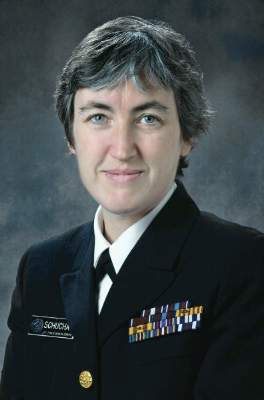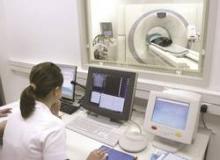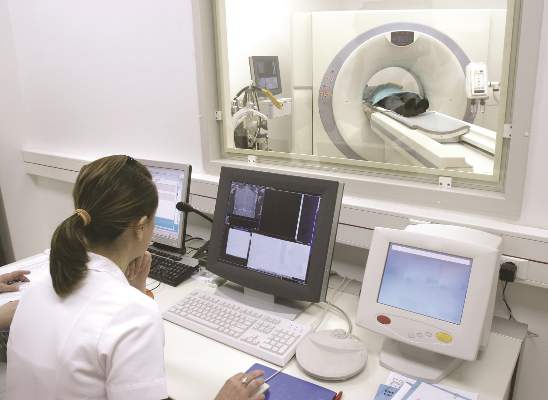User login
MedPAC to look at physician prescribing tools as a way to control drug spending
WASHINGTON – The Medicare Payment Advisory Commission is going to look at physician prescribing tools as part of a broader examination of how to rein in Medicare drug spending.
Members acknowledged during the Sept. 11, 2015, meeting that when it comes to the prices of drugs in the Medicare programs, the tools are limited to keep the prices low. Between statutory requirements for coverage of drugs in protected classes and a prohibition against the secretary of Health and Human Services negotiating prices for the Part D prescription drug benefit and other statutory requirements, even for intermediaries such as plan providers and hospital groups, leverage in price negotiations is very limited.
However, commission member Dr. Craig Samitt, former partner at Oliver Wyman of Paradise Valley, Ariz., suggested that the focus should be more on what leverage providers might have when it comes to utilization.
“So if we feel that neither CMS nor the intermediaries have sufficient leverage, well then who has significant leverage? The prescribing clinician,” Dr. Samitt said. “How well have we aligned interests around utilization in particular, not so much price, with the clinicians?”
Dr. Samitt noted that on the commercial side, there is a focus on utilization as a more effective driver of price, rather than simply targeting price first in the negotiation process, and suggested there might be room in Medicare for that kind of focus.
He also suggested that perhaps including drug utilization within the context of accountable care organizations could result in “additional focus on more effective prescribing patterns.”
The conversation occurred against a backdrop of examination of drug spending in general. MedPAC staff noted that Medicare is becoming a more prominent payer for drugs in the wake of Part D’s launch.
MedPAC staff estimates that in 2013, retail drugs made up 13% of Medicare spending, versus 9% of national health expenditures. Additionally, of the $574 billion spent by Medicare in that year, 19% was drugs and pharmacy, with the majority of drug spending (57%) coming from Part D.
The discussion was just the first on the subject as the group will look at other aspects of drug pricing and spending in future meetings. A specific timetable for offering policy recommendations was not discussed.
Dr. William Hall, professor at the University of Rochester (N.Y.) School of Medicine, added that it is not the price of the drug per se, but its value that needs to be focused on. He noted that the prices of the latest hepatitis C drugs might be high, but the value they have to the health care system is much greater and needs to be taken into consideration.
“One of the big differences from 2004 is we know a great deal more about the efficacy of drugs,” Dr. Hall said, suggesting that more needs to be done to educate clinicians on the proper use of medications as part of finding the right way to use physician prescribing patterns as leverage in price negotiations.
WASHINGTON – The Medicare Payment Advisory Commission is going to look at physician prescribing tools as part of a broader examination of how to rein in Medicare drug spending.
Members acknowledged during the Sept. 11, 2015, meeting that when it comes to the prices of drugs in the Medicare programs, the tools are limited to keep the prices low. Between statutory requirements for coverage of drugs in protected classes and a prohibition against the secretary of Health and Human Services negotiating prices for the Part D prescription drug benefit and other statutory requirements, even for intermediaries such as plan providers and hospital groups, leverage in price negotiations is very limited.
However, commission member Dr. Craig Samitt, former partner at Oliver Wyman of Paradise Valley, Ariz., suggested that the focus should be more on what leverage providers might have when it comes to utilization.
“So if we feel that neither CMS nor the intermediaries have sufficient leverage, well then who has significant leverage? The prescribing clinician,” Dr. Samitt said. “How well have we aligned interests around utilization in particular, not so much price, with the clinicians?”
Dr. Samitt noted that on the commercial side, there is a focus on utilization as a more effective driver of price, rather than simply targeting price first in the negotiation process, and suggested there might be room in Medicare for that kind of focus.
He also suggested that perhaps including drug utilization within the context of accountable care organizations could result in “additional focus on more effective prescribing patterns.”
The conversation occurred against a backdrop of examination of drug spending in general. MedPAC staff noted that Medicare is becoming a more prominent payer for drugs in the wake of Part D’s launch.
MedPAC staff estimates that in 2013, retail drugs made up 13% of Medicare spending, versus 9% of national health expenditures. Additionally, of the $574 billion spent by Medicare in that year, 19% was drugs and pharmacy, with the majority of drug spending (57%) coming from Part D.
The discussion was just the first on the subject as the group will look at other aspects of drug pricing and spending in future meetings. A specific timetable for offering policy recommendations was not discussed.
Dr. William Hall, professor at the University of Rochester (N.Y.) School of Medicine, added that it is not the price of the drug per se, but its value that needs to be focused on. He noted that the prices of the latest hepatitis C drugs might be high, but the value they have to the health care system is much greater and needs to be taken into consideration.
“One of the big differences from 2004 is we know a great deal more about the efficacy of drugs,” Dr. Hall said, suggesting that more needs to be done to educate clinicians on the proper use of medications as part of finding the right way to use physician prescribing patterns as leverage in price negotiations.
WASHINGTON – The Medicare Payment Advisory Commission is going to look at physician prescribing tools as part of a broader examination of how to rein in Medicare drug spending.
Members acknowledged during the Sept. 11, 2015, meeting that when it comes to the prices of drugs in the Medicare programs, the tools are limited to keep the prices low. Between statutory requirements for coverage of drugs in protected classes and a prohibition against the secretary of Health and Human Services negotiating prices for the Part D prescription drug benefit and other statutory requirements, even for intermediaries such as plan providers and hospital groups, leverage in price negotiations is very limited.
However, commission member Dr. Craig Samitt, former partner at Oliver Wyman of Paradise Valley, Ariz., suggested that the focus should be more on what leverage providers might have when it comes to utilization.
“So if we feel that neither CMS nor the intermediaries have sufficient leverage, well then who has significant leverage? The prescribing clinician,” Dr. Samitt said. “How well have we aligned interests around utilization in particular, not so much price, with the clinicians?”
Dr. Samitt noted that on the commercial side, there is a focus on utilization as a more effective driver of price, rather than simply targeting price first in the negotiation process, and suggested there might be room in Medicare for that kind of focus.
He also suggested that perhaps including drug utilization within the context of accountable care organizations could result in “additional focus on more effective prescribing patterns.”
The conversation occurred against a backdrop of examination of drug spending in general. MedPAC staff noted that Medicare is becoming a more prominent payer for drugs in the wake of Part D’s launch.
MedPAC staff estimates that in 2013, retail drugs made up 13% of Medicare spending, versus 9% of national health expenditures. Additionally, of the $574 billion spent by Medicare in that year, 19% was drugs and pharmacy, with the majority of drug spending (57%) coming from Part D.
The discussion was just the first on the subject as the group will look at other aspects of drug pricing and spending in future meetings. A specific timetable for offering policy recommendations was not discussed.
Dr. William Hall, professor at the University of Rochester (N.Y.) School of Medicine, added that it is not the price of the drug per se, but its value that needs to be focused on. He noted that the prices of the latest hepatitis C drugs might be high, but the value they have to the health care system is much greater and needs to be taken into consideration.
“One of the big differences from 2004 is we know a great deal more about the efficacy of drugs,” Dr. Hall said, suggesting that more needs to be done to educate clinicians on the proper use of medications as part of finding the right way to use physician prescribing patterns as leverage in price negotiations.
AT A MEETING OF THE MEDICARE PAYMENT ADVISORY COMMISSION
ICD-10 testers recommend certified coders, lighter loads for October
The advice from those who have already tried coding with ICD-10? Hire a certified coder if you don’t have one on staff already.
“If a physician office doesn’t have a certified coder, it should,” according to Penny Osmon Bahr, director of Avastone Health Solutions, who took part in the final International Classification of Disease, tenth revision, “end-to-end” test conducted by the Centers for Medicare & Medicaid in July. “That’s just plain and simple.”
Ms. Osmon Bahr described coding as “the pulse point of how data are really consumed,” whether via ICD-10 or part of value-based contracting, research on patient outcomes, or incentives being driven by the CMS. “It takes coders to ensure that the data that is going out truly represents your patient population and the patients that you are treating.”
Some physician practices “haven’t invested in education for staff to become knowledgeable in coding or certified in coding. That could be a struggle as the world continues to evolve.”
Another bit of advice: Scale back on the number of patient visits you book in October. That will give extra time to learn and incorporate ICD-10 into work flows.
“One of the things that we’ve encouraged our physicians to do is they need to lighten their schedules in October to prepare for ICD-10 to make sure they are completing the documentation that’s needed and coding with the current codes,” Lori Albano, manager of EDI development and support with practice management and EHR software vendor Nextgen Healthcare of Atlanta. “So maybe the first 2 weeks they lighten [appointments] by 20%” and then set up a specific schedule to ramp back up to full capacity.
Ms. Albano also recommended a focused approach to learning new codes to help avoid being overwhelmed.
“Take the top 50-100 ICD-9 codes that you currently use and become familiar with those ICD-10 codes and the documentation required to support them,” she said. “Start documenting on that level now.”
Ms. Osmon Bahr also stressed thorough documentation.
“You always want to tell the most specific story about your patient that you can,” she said, based on the greater number and specificity of the ICD-10 code set.
Ms. Osmon Bahr and Ms. Albano both spoke positively of the experience of testing and said that CMS appears ready to make the transition. The agency announced on Aug. 28 that its final round of end-to-end testing found no new issues and that no CMS front-end issues led to claims rejections. Previous issues in prior test rounds have been resolved, the agency noted.
The advice from those who have already tried coding with ICD-10? Hire a certified coder if you don’t have one on staff already.
“If a physician office doesn’t have a certified coder, it should,” according to Penny Osmon Bahr, director of Avastone Health Solutions, who took part in the final International Classification of Disease, tenth revision, “end-to-end” test conducted by the Centers for Medicare & Medicaid in July. “That’s just plain and simple.”
Ms. Osmon Bahr described coding as “the pulse point of how data are really consumed,” whether via ICD-10 or part of value-based contracting, research on patient outcomes, or incentives being driven by the CMS. “It takes coders to ensure that the data that is going out truly represents your patient population and the patients that you are treating.”
Some physician practices “haven’t invested in education for staff to become knowledgeable in coding or certified in coding. That could be a struggle as the world continues to evolve.”
Another bit of advice: Scale back on the number of patient visits you book in October. That will give extra time to learn and incorporate ICD-10 into work flows.
“One of the things that we’ve encouraged our physicians to do is they need to lighten their schedules in October to prepare for ICD-10 to make sure they are completing the documentation that’s needed and coding with the current codes,” Lori Albano, manager of EDI development and support with practice management and EHR software vendor Nextgen Healthcare of Atlanta. “So maybe the first 2 weeks they lighten [appointments] by 20%” and then set up a specific schedule to ramp back up to full capacity.
Ms. Albano also recommended a focused approach to learning new codes to help avoid being overwhelmed.
“Take the top 50-100 ICD-9 codes that you currently use and become familiar with those ICD-10 codes and the documentation required to support them,” she said. “Start documenting on that level now.”
Ms. Osmon Bahr also stressed thorough documentation.
“You always want to tell the most specific story about your patient that you can,” she said, based on the greater number and specificity of the ICD-10 code set.
Ms. Osmon Bahr and Ms. Albano both spoke positively of the experience of testing and said that CMS appears ready to make the transition. The agency announced on Aug. 28 that its final round of end-to-end testing found no new issues and that no CMS front-end issues led to claims rejections. Previous issues in prior test rounds have been resolved, the agency noted.
The advice from those who have already tried coding with ICD-10? Hire a certified coder if you don’t have one on staff already.
“If a physician office doesn’t have a certified coder, it should,” according to Penny Osmon Bahr, director of Avastone Health Solutions, who took part in the final International Classification of Disease, tenth revision, “end-to-end” test conducted by the Centers for Medicare & Medicaid in July. “That’s just plain and simple.”
Ms. Osmon Bahr described coding as “the pulse point of how data are really consumed,” whether via ICD-10 or part of value-based contracting, research on patient outcomes, or incentives being driven by the CMS. “It takes coders to ensure that the data that is going out truly represents your patient population and the patients that you are treating.”
Some physician practices “haven’t invested in education for staff to become knowledgeable in coding or certified in coding. That could be a struggle as the world continues to evolve.”
Another bit of advice: Scale back on the number of patient visits you book in October. That will give extra time to learn and incorporate ICD-10 into work flows.
“One of the things that we’ve encouraged our physicians to do is they need to lighten their schedules in October to prepare for ICD-10 to make sure they are completing the documentation that’s needed and coding with the current codes,” Lori Albano, manager of EDI development and support with practice management and EHR software vendor Nextgen Healthcare of Atlanta. “So maybe the first 2 weeks they lighten [appointments] by 20%” and then set up a specific schedule to ramp back up to full capacity.
Ms. Albano also recommended a focused approach to learning new codes to help avoid being overwhelmed.
“Take the top 50-100 ICD-9 codes that you currently use and become familiar with those ICD-10 codes and the documentation required to support them,” she said. “Start documenting on that level now.”
Ms. Osmon Bahr also stressed thorough documentation.
“You always want to tell the most specific story about your patient that you can,” she said, based on the greater number and specificity of the ICD-10 code set.
Ms. Osmon Bahr and Ms. Albano both spoke positively of the experience of testing and said that CMS appears ready to make the transition. The agency announced on Aug. 28 that its final round of end-to-end testing found no new issues and that no CMS front-end issues led to claims rejections. Previous issues in prior test rounds have been resolved, the agency noted.
Lawmakers debate Planned Parenthood videos, defunding
WASHINGTON – The debate over whether Planned Parenthood violated federal law through the sale of fetal tissue, and whether federal dollars should continue to fund some of its health services, continues in Congress.
On Sept. 9, the House Judiciary Committee heard testimony intended to inform the ongoing debate. However, no representatives from either Planned Parenthood or The Center for Medical Progress, which released videos this summer alleging that the women’s health organization was illegally profiting from the sale of fetal tissue, were a part of the hearing.
That point was not lost on the committee’s Democrats, who said the videos released to the public were heavily edited and may have had context removed that would have demonstrated that Planned Parenthood was not engaging in any illegal activity.
“Notably, The Center for Medical Progress – the entity that filmed these videos and which could answer significant and troubling questions about their accuracy and veracity – is not here today,” Rep. John Conyers Jr. (D-Mich.), ranking member of the Judiciary Committee, said in his opening statement. “In addition, the majority chose not to invite Planned Parenthood, the target of today’s attacks.”
Separately, the Democratic staff of the House Energy and Commerce Committee issued a memo stating that an investigation conducted by their committee “uncovered no evidence that Planned Parenthood violated the law.”
That same conclusion was reached by Ms. Priscilla Smith, director of the Program for the Study of Reproductive Justice at Yale Law School, who testified during the Judiciary Committee hearing that “there is simply no evidence in these misleadingly edited videos of a violation” of the Partial Birth Abortion Ban Act of 2003 or laws governing fetal tissue donation.
But Republican members of the committee countered that some of the videos revelations – specifically about how abortions were conducted – would not be impacted by editing.
“In this case, the videos were so abhorrent and so unconscionable that it is our responsibility to step up and to have these hearings to get to the bottom of it before we go forward with the same old, same old of funding and funding for the sake of having done it before,” Rep. Mike Bishop (R-Mich.) said.
Rep. Trent Franks (R-Ariz.), chairman of the Subcommittee on the Constitution and Civil Justice, acknowledged during the hearing that the majority party has not reached out to The Center for Medical Progress to obtain the raw footage.
A second hearing on this subject is expected to be scheduled soon. The battle to defund Planned Parenthood, based largely on the release of the controversial videos, is now taking center stage in federal budget discussions. A government shutdown is possible if lawmakers can’t come to a compromise over Planned Parenthood funding before the Sept. 30 deadline to pass budget legislation.
WASHINGTON – The debate over whether Planned Parenthood violated federal law through the sale of fetal tissue, and whether federal dollars should continue to fund some of its health services, continues in Congress.
On Sept. 9, the House Judiciary Committee heard testimony intended to inform the ongoing debate. However, no representatives from either Planned Parenthood or The Center for Medical Progress, which released videos this summer alleging that the women’s health organization was illegally profiting from the sale of fetal tissue, were a part of the hearing.
That point was not lost on the committee’s Democrats, who said the videos released to the public were heavily edited and may have had context removed that would have demonstrated that Planned Parenthood was not engaging in any illegal activity.
“Notably, The Center for Medical Progress – the entity that filmed these videos and which could answer significant and troubling questions about their accuracy and veracity – is not here today,” Rep. John Conyers Jr. (D-Mich.), ranking member of the Judiciary Committee, said in his opening statement. “In addition, the majority chose not to invite Planned Parenthood, the target of today’s attacks.”
Separately, the Democratic staff of the House Energy and Commerce Committee issued a memo stating that an investigation conducted by their committee “uncovered no evidence that Planned Parenthood violated the law.”
That same conclusion was reached by Ms. Priscilla Smith, director of the Program for the Study of Reproductive Justice at Yale Law School, who testified during the Judiciary Committee hearing that “there is simply no evidence in these misleadingly edited videos of a violation” of the Partial Birth Abortion Ban Act of 2003 or laws governing fetal tissue donation.
But Republican members of the committee countered that some of the videos revelations – specifically about how abortions were conducted – would not be impacted by editing.
“In this case, the videos were so abhorrent and so unconscionable that it is our responsibility to step up and to have these hearings to get to the bottom of it before we go forward with the same old, same old of funding and funding for the sake of having done it before,” Rep. Mike Bishop (R-Mich.) said.
Rep. Trent Franks (R-Ariz.), chairman of the Subcommittee on the Constitution and Civil Justice, acknowledged during the hearing that the majority party has not reached out to The Center for Medical Progress to obtain the raw footage.
A second hearing on this subject is expected to be scheduled soon. The battle to defund Planned Parenthood, based largely on the release of the controversial videos, is now taking center stage in federal budget discussions. A government shutdown is possible if lawmakers can’t come to a compromise over Planned Parenthood funding before the Sept. 30 deadline to pass budget legislation.
WASHINGTON – The debate over whether Planned Parenthood violated federal law through the sale of fetal tissue, and whether federal dollars should continue to fund some of its health services, continues in Congress.
On Sept. 9, the House Judiciary Committee heard testimony intended to inform the ongoing debate. However, no representatives from either Planned Parenthood or The Center for Medical Progress, which released videos this summer alleging that the women’s health organization was illegally profiting from the sale of fetal tissue, were a part of the hearing.
That point was not lost on the committee’s Democrats, who said the videos released to the public were heavily edited and may have had context removed that would have demonstrated that Planned Parenthood was not engaging in any illegal activity.
“Notably, The Center for Medical Progress – the entity that filmed these videos and which could answer significant and troubling questions about their accuracy and veracity – is not here today,” Rep. John Conyers Jr. (D-Mich.), ranking member of the Judiciary Committee, said in his opening statement. “In addition, the majority chose not to invite Planned Parenthood, the target of today’s attacks.”
Separately, the Democratic staff of the House Energy and Commerce Committee issued a memo stating that an investigation conducted by their committee “uncovered no evidence that Planned Parenthood violated the law.”
That same conclusion was reached by Ms. Priscilla Smith, director of the Program for the Study of Reproductive Justice at Yale Law School, who testified during the Judiciary Committee hearing that “there is simply no evidence in these misleadingly edited videos of a violation” of the Partial Birth Abortion Ban Act of 2003 or laws governing fetal tissue donation.
But Republican members of the committee countered that some of the videos revelations – specifically about how abortions were conducted – would not be impacted by editing.
“In this case, the videos were so abhorrent and so unconscionable that it is our responsibility to step up and to have these hearings to get to the bottom of it before we go forward with the same old, same old of funding and funding for the sake of having done it before,” Rep. Mike Bishop (R-Mich.) said.
Rep. Trent Franks (R-Ariz.), chairman of the Subcommittee on the Constitution and Civil Justice, acknowledged during the hearing that the majority party has not reached out to The Center for Medical Progress to obtain the raw footage.
A second hearing on this subject is expected to be scheduled soon. The battle to defund Planned Parenthood, based largely on the release of the controversial videos, is now taking center stage in federal budget discussions. A government shutdown is possible if lawmakers can’t come to a compromise over Planned Parenthood funding before the Sept. 30 deadline to pass budget legislation.
AT A HOUSE JUDICIARY COMMITTEE HEARING
PODCAST: CMS Says It Is Ready for Your ICD-10 Claims
Whether or not clinicians are ready to for the ICD-10 transition, the Centers for Medicare & Medicaid services says it is ready to receive and process ICD-10 claims after a third and final round of end-to-end testing yielded no new issues and resolutions to previous problems in the early-testing rounds.
Participants in the testing agree the agency appears ready for the Oct. 1 transition date, and offer advice to clinicians to help make the transition a smooth one.
Meanwhile, providers are encouraged to look carefully at new data-reporting requirements in the proposed 2016 Medicare physician fee schedule update. Comments on the proposal are due to CMS on Sept. 8.
Another area for clinicians to keep an eye on is the coming test for Value-based Insurance Design (VBID) that CMS is launching. It is targeting Medicare Advantage plans in seven states during the 5-year test beginning in January 2017. Plans will be given plan design flexibility across a number of chronic conditions to see if they can encourage higher quality and more cost-efficient care. The American Medical Association is urging providers to be active participants in VBID to ensure plan designs reflect the best clinical practices and do not limit patient access to necessary care.
To hear all of this and to learn about HHS’ plans to curb transgender discrimination in the health care system, listen to this week’s Policy & Practice Podcast.
Whether or not clinicians are ready to for the ICD-10 transition, the Centers for Medicare & Medicaid services says it is ready to receive and process ICD-10 claims after a third and final round of end-to-end testing yielded no new issues and resolutions to previous problems in the early-testing rounds.
Participants in the testing agree the agency appears ready for the Oct. 1 transition date, and offer advice to clinicians to help make the transition a smooth one.
Meanwhile, providers are encouraged to look carefully at new data-reporting requirements in the proposed 2016 Medicare physician fee schedule update. Comments on the proposal are due to CMS on Sept. 8.
Another area for clinicians to keep an eye on is the coming test for Value-based Insurance Design (VBID) that CMS is launching. It is targeting Medicare Advantage plans in seven states during the 5-year test beginning in January 2017. Plans will be given plan design flexibility across a number of chronic conditions to see if they can encourage higher quality and more cost-efficient care. The American Medical Association is urging providers to be active participants in VBID to ensure plan designs reflect the best clinical practices and do not limit patient access to necessary care.
To hear all of this and to learn about HHS’ plans to curb transgender discrimination in the health care system, listen to this week’s Policy & Practice Podcast.
Whether or not clinicians are ready to for the ICD-10 transition, the Centers for Medicare & Medicaid services says it is ready to receive and process ICD-10 claims after a third and final round of end-to-end testing yielded no new issues and resolutions to previous problems in the early-testing rounds.
Participants in the testing agree the agency appears ready for the Oct. 1 transition date, and offer advice to clinicians to help make the transition a smooth one.
Meanwhile, providers are encouraged to look carefully at new data-reporting requirements in the proposed 2016 Medicare physician fee schedule update. Comments on the proposal are due to CMS on Sept. 8.
Another area for clinicians to keep an eye on is the coming test for Value-based Insurance Design (VBID) that CMS is launching. It is targeting Medicare Advantage plans in seven states during the 5-year test beginning in January 2017. Plans will be given plan design flexibility across a number of chronic conditions to see if they can encourage higher quality and more cost-efficient care. The American Medical Association is urging providers to be active participants in VBID to ensure plan designs reflect the best clinical practices and do not limit patient access to necessary care.
To hear all of this and to learn about HHS’ plans to curb transgender discrimination in the health care system, listen to this week’s Policy & Practice Podcast.
CMS: We’re ready to accept and process ICD-10 claims
The Centers for Medicare and Medicaid Services says it completed its final Medicare fee-for-service end-to-end testing of ICD-10 with positive results.
“This final end-to-end testing [that occurred July 20-24] demonstrated that CMS systems are ready to accept and process ICD-10 claims,” the agency said in an email update.
A separate report on the most recent testing noted that “no new ICD-10 related issues were identified in any of the Medicare fee-for-service claims processing systems. There were zero rejects due to front-end CMS systems issues,” and concerns from previous tests were resolved prior to the final testing week.
The final test was based on 1,200 participants, including physicians, health care providers, clearinghouses, and billing agencies. They submitted more than 29,000 test claims, including some that were intentionally erroneous to make sure a claim was rejected.
The agency reported an 87% acceptance rate, with 1.8% of test claims rejected because of invalid submission of ICD-10 diagnosis or procedure codes and 2.6% of test claims rejected due to invalid submission of ICD-9 diagnosis or procedure codes.
The acceptance rate (88%) was consistent with the previous test from April 27 to May 1 and up from the 81% acceptance rate reported during the Jan. 26–Feb. 3 testing period.
Additional rejections were generated from non-ICD-10 related errors, including incorrect NPI, health insurance claim number, or submitter ID; dates of service outside the range valid for testing; invalid HCPCS codes; and invalid place of service.
“Most rejects were the result of provider submission errors in the testing environment that would not occur when actual claims are submitted for processing,” the agency said in a report.
The ICD-10 compliance date is Oct. 1; however, CMS announced in July that during that first year using the new coding system, Medicare will not deny claims based solely on the specificity of diagnosis codes, provided they are in the appropriate family of ICD-10 codes.
The Centers for Medicare and Medicaid Services says it completed its final Medicare fee-for-service end-to-end testing of ICD-10 with positive results.
“This final end-to-end testing [that occurred July 20-24] demonstrated that CMS systems are ready to accept and process ICD-10 claims,” the agency said in an email update.
A separate report on the most recent testing noted that “no new ICD-10 related issues were identified in any of the Medicare fee-for-service claims processing systems. There were zero rejects due to front-end CMS systems issues,” and concerns from previous tests were resolved prior to the final testing week.
The final test was based on 1,200 participants, including physicians, health care providers, clearinghouses, and billing agencies. They submitted more than 29,000 test claims, including some that were intentionally erroneous to make sure a claim was rejected.
The agency reported an 87% acceptance rate, with 1.8% of test claims rejected because of invalid submission of ICD-10 diagnosis or procedure codes and 2.6% of test claims rejected due to invalid submission of ICD-9 diagnosis or procedure codes.
The acceptance rate (88%) was consistent with the previous test from April 27 to May 1 and up from the 81% acceptance rate reported during the Jan. 26–Feb. 3 testing period.
Additional rejections were generated from non-ICD-10 related errors, including incorrect NPI, health insurance claim number, or submitter ID; dates of service outside the range valid for testing; invalid HCPCS codes; and invalid place of service.
“Most rejects were the result of provider submission errors in the testing environment that would not occur when actual claims are submitted for processing,” the agency said in a report.
The ICD-10 compliance date is Oct. 1; however, CMS announced in July that during that first year using the new coding system, Medicare will not deny claims based solely on the specificity of diagnosis codes, provided they are in the appropriate family of ICD-10 codes.
The Centers for Medicare and Medicaid Services says it completed its final Medicare fee-for-service end-to-end testing of ICD-10 with positive results.
“This final end-to-end testing [that occurred July 20-24] demonstrated that CMS systems are ready to accept and process ICD-10 claims,” the agency said in an email update.
A separate report on the most recent testing noted that “no new ICD-10 related issues were identified in any of the Medicare fee-for-service claims processing systems. There were zero rejects due to front-end CMS systems issues,” and concerns from previous tests were resolved prior to the final testing week.
The final test was based on 1,200 participants, including physicians, health care providers, clearinghouses, and billing agencies. They submitted more than 29,000 test claims, including some that were intentionally erroneous to make sure a claim was rejected.
The agency reported an 87% acceptance rate, with 1.8% of test claims rejected because of invalid submission of ICD-10 diagnosis or procedure codes and 2.6% of test claims rejected due to invalid submission of ICD-9 diagnosis or procedure codes.
The acceptance rate (88%) was consistent with the previous test from April 27 to May 1 and up from the 81% acceptance rate reported during the Jan. 26–Feb. 3 testing period.
Additional rejections were generated from non-ICD-10 related errors, including incorrect NPI, health insurance claim number, or submitter ID; dates of service outside the range valid for testing; invalid HCPCS codes; and invalid place of service.
“Most rejects were the result of provider submission errors in the testing environment that would not occur when actual claims are submitted for processing,” the agency said in a report.
The ICD-10 compliance date is Oct. 1; however, CMS announced in July that during that first year using the new coding system, Medicare will not deny claims based solely on the specificity of diagnosis codes, provided they are in the appropriate family of ICD-10 codes.
ACOs generate savings, but few get bonuses
Accountable care organizations (ACOs) accounted for savings of more than $411 million in 2014, according to the Centers for Medicare & Medicaid Services.
However, of the 20 Pioneer ACO programs and the 333 ACOs participating in the Medicare shared savings program, 97 qualified for shared savings payments of more than $422 million by meeting quality standards and their saving threshold, according to a report from the CMS.
In addition to savings, provider groups also reported improvement on certain quality metrics. For those in the Pioneer ACO program, groups demonstrated improvement on 28 of 33 quality measures and experienced a 3.6% improvement across all quality measures, compared with the previous year. Top areas of improvement were medication reconciliation, screening for clinical depression and follow-up plan, and qualification for electronic health record incentive payments.
For ACOs participating in the Medicare Shared Savings program, improvement was shown in 27 of 33 quality measures, including patients’ ratings of clinicians’ communication, patients’ ratings of their doctors, screening for tobacco use and cessation, screening for high blood pressure, and EHR use.
“Accountable care organizations as a group are on the path toward transforming how care is provided,” CMS Acting Administrator Andy Slavitt said in a statement. “Many of these ACOs are demonstrating that they can deliver a higher level of coordinated care that leads to healthier people and smarter spending.”
Accountable care organizations (ACOs) accounted for savings of more than $411 million in 2014, according to the Centers for Medicare & Medicaid Services.
However, of the 20 Pioneer ACO programs and the 333 ACOs participating in the Medicare shared savings program, 97 qualified for shared savings payments of more than $422 million by meeting quality standards and their saving threshold, according to a report from the CMS.
In addition to savings, provider groups also reported improvement on certain quality metrics. For those in the Pioneer ACO program, groups demonstrated improvement on 28 of 33 quality measures and experienced a 3.6% improvement across all quality measures, compared with the previous year. Top areas of improvement were medication reconciliation, screening for clinical depression and follow-up plan, and qualification for electronic health record incentive payments.
For ACOs participating in the Medicare Shared Savings program, improvement was shown in 27 of 33 quality measures, including patients’ ratings of clinicians’ communication, patients’ ratings of their doctors, screening for tobacco use and cessation, screening for high blood pressure, and EHR use.
“Accountable care organizations as a group are on the path toward transforming how care is provided,” CMS Acting Administrator Andy Slavitt said in a statement. “Many of these ACOs are demonstrating that they can deliver a higher level of coordinated care that leads to healthier people and smarter spending.”
Accountable care organizations (ACOs) accounted for savings of more than $411 million in 2014, according to the Centers for Medicare & Medicaid Services.
However, of the 20 Pioneer ACO programs and the 333 ACOs participating in the Medicare shared savings program, 97 qualified for shared savings payments of more than $422 million by meeting quality standards and their saving threshold, according to a report from the CMS.
In addition to savings, provider groups also reported improvement on certain quality metrics. For those in the Pioneer ACO program, groups demonstrated improvement on 28 of 33 quality measures and experienced a 3.6% improvement across all quality measures, compared with the previous year. Top areas of improvement were medication reconciliation, screening for clinical depression and follow-up plan, and qualification for electronic health record incentive payments.
For ACOs participating in the Medicare Shared Savings program, improvement was shown in 27 of 33 quality measures, including patients’ ratings of clinicians’ communication, patients’ ratings of their doctors, screening for tobacco use and cessation, screening for high blood pressure, and EHR use.
“Accountable care organizations as a group are on the path toward transforming how care is provided,” CMS Acting Administrator Andy Slavitt said in a statement. “Many of these ACOs are demonstrating that they can deliver a higher level of coordinated care that leads to healthier people and smarter spending.”
Data suggest low vaccine exemption rates, but more granular data are needed
Parents of children in kindergarten in general are seeking exemptions from vaccination requirements for 1.7% of this population, according to new data released by the Centers for Disease Control and Prevention.
Of the 45 states and the District of Columbia for which data are available showing children enrolled in kindergarten who have been exempted from receiving one or more vaccines by their state, 6 states have less than 1% receiving exemption, 20 have between 1% and 2% receiving exemptions, 9 have between 2% and up to 4% receiving exemptions, and 11 have 4% or more receiving exemptions.
The 49 states and DC reported vaccination coverage data for 4,121,322 kindergartners, and 46 states and D.C. reported exemption data, including the number of children with at least one exemption, for 3,829,686 kindergartners.
During an Aug. 28 conference call, Dr. Anne Schuchat, director of CDC’s National Center for Immunization and Respiratory Diseases, noted that the granting of exemptions does not necessarily mean a child was not vaccinated, and that while medical exemptions are available in all states, the type of nonmedical (such as religious or philosophical) exemption does vary.
“An exemption might be requested for all vaccines even if a child [missed only] a single vaccine or a single vaccine dose, and in some states, a parent or guardian might actually claim an exemption if they don’t have the child’s vaccination record available,” she said.
But Dr. Schuchat stressed that policy should be such that getting a vaccine exemption should not be an easy process.
“We know that the more difficult it is to obtain an exemption, the fewer people will exempt their children from vaccines,” Dr. Schuchat said. “We certainly think it should be easier to get a vaccine than to get an exemption from a required vaccination.”
Mississippi had the lowest exemption rate at less than 0.1%, while Idaho had the highest at 6.5%. Three states – Kansas, Maine, and Oregon – reported a decrease of greater than 1% in exemptions from the 2013-2014 school year to the 2014-2015 school year.
When reported separately, the median percentage of medical exemptions was 0.2%, with four states showing less than 0.1% (Arkansas, Colorado, Hawaii, and Mississippi) and Alaska having 1.3%. Where allowed and reported separately, the median percentage of nonmedical exemptions was 1.5%, with D.C. at the low end of the range at 0.5% and Idaho at 6.2%.
However, these data might not be fully accurate or complete.
“The current assessment methods used to estimate coverage and exemptions in many states might be insufficient for immunization programs to identify children or communities at risk for vaccine-preventable diseases and might limit the ability of immunization programs to respond to outbreaks,” Ranee Seither, an epidemiologist in the CDC’s National Center for Immunization and Respiratory Diseases, and colleagues wrote in the MMWR (2015, Aug 28. 64[33];897-904).
Dr. Schuchat also noted that 3 more states are now providing more local level information on immunization and exemption rates, increasing the number of states providing that information to 21 for the current school year from 18 in the 2013-2014 year and 11 in 2102-2013, although the detail provided is not uniform.
“Local data can be very helpful for us to understand where do we need to put our attention and where do we have real risks for vaccine-preventable diseases,” Dr. Schuchat said.
Parents of children in kindergarten in general are seeking exemptions from vaccination requirements for 1.7% of this population, according to new data released by the Centers for Disease Control and Prevention.
Of the 45 states and the District of Columbia for which data are available showing children enrolled in kindergarten who have been exempted from receiving one or more vaccines by their state, 6 states have less than 1% receiving exemption, 20 have between 1% and 2% receiving exemptions, 9 have between 2% and up to 4% receiving exemptions, and 11 have 4% or more receiving exemptions.
The 49 states and DC reported vaccination coverage data for 4,121,322 kindergartners, and 46 states and D.C. reported exemption data, including the number of children with at least one exemption, for 3,829,686 kindergartners.
During an Aug. 28 conference call, Dr. Anne Schuchat, director of CDC’s National Center for Immunization and Respiratory Diseases, noted that the granting of exemptions does not necessarily mean a child was not vaccinated, and that while medical exemptions are available in all states, the type of nonmedical (such as religious or philosophical) exemption does vary.
“An exemption might be requested for all vaccines even if a child [missed only] a single vaccine or a single vaccine dose, and in some states, a parent or guardian might actually claim an exemption if they don’t have the child’s vaccination record available,” she said.
But Dr. Schuchat stressed that policy should be such that getting a vaccine exemption should not be an easy process.
“We know that the more difficult it is to obtain an exemption, the fewer people will exempt their children from vaccines,” Dr. Schuchat said. “We certainly think it should be easier to get a vaccine than to get an exemption from a required vaccination.”
Mississippi had the lowest exemption rate at less than 0.1%, while Idaho had the highest at 6.5%. Three states – Kansas, Maine, and Oregon – reported a decrease of greater than 1% in exemptions from the 2013-2014 school year to the 2014-2015 school year.
When reported separately, the median percentage of medical exemptions was 0.2%, with four states showing less than 0.1% (Arkansas, Colorado, Hawaii, and Mississippi) and Alaska having 1.3%. Where allowed and reported separately, the median percentage of nonmedical exemptions was 1.5%, with D.C. at the low end of the range at 0.5% and Idaho at 6.2%.
However, these data might not be fully accurate or complete.
“The current assessment methods used to estimate coverage and exemptions in many states might be insufficient for immunization programs to identify children or communities at risk for vaccine-preventable diseases and might limit the ability of immunization programs to respond to outbreaks,” Ranee Seither, an epidemiologist in the CDC’s National Center for Immunization and Respiratory Diseases, and colleagues wrote in the MMWR (2015, Aug 28. 64[33];897-904).
Dr. Schuchat also noted that 3 more states are now providing more local level information on immunization and exemption rates, increasing the number of states providing that information to 21 for the current school year from 18 in the 2013-2014 year and 11 in 2102-2013, although the detail provided is not uniform.
“Local data can be very helpful for us to understand where do we need to put our attention and where do we have real risks for vaccine-preventable diseases,” Dr. Schuchat said.
Parents of children in kindergarten in general are seeking exemptions from vaccination requirements for 1.7% of this population, according to new data released by the Centers for Disease Control and Prevention.
Of the 45 states and the District of Columbia for which data are available showing children enrolled in kindergarten who have been exempted from receiving one or more vaccines by their state, 6 states have less than 1% receiving exemption, 20 have between 1% and 2% receiving exemptions, 9 have between 2% and up to 4% receiving exemptions, and 11 have 4% or more receiving exemptions.
The 49 states and DC reported vaccination coverage data for 4,121,322 kindergartners, and 46 states and D.C. reported exemption data, including the number of children with at least one exemption, for 3,829,686 kindergartners.
During an Aug. 28 conference call, Dr. Anne Schuchat, director of CDC’s National Center for Immunization and Respiratory Diseases, noted that the granting of exemptions does not necessarily mean a child was not vaccinated, and that while medical exemptions are available in all states, the type of nonmedical (such as religious or philosophical) exemption does vary.
“An exemption might be requested for all vaccines even if a child [missed only] a single vaccine or a single vaccine dose, and in some states, a parent or guardian might actually claim an exemption if they don’t have the child’s vaccination record available,” she said.
But Dr. Schuchat stressed that policy should be such that getting a vaccine exemption should not be an easy process.
“We know that the more difficult it is to obtain an exemption, the fewer people will exempt their children from vaccines,” Dr. Schuchat said. “We certainly think it should be easier to get a vaccine than to get an exemption from a required vaccination.”
Mississippi had the lowest exemption rate at less than 0.1%, while Idaho had the highest at 6.5%. Three states – Kansas, Maine, and Oregon – reported a decrease of greater than 1% in exemptions from the 2013-2014 school year to the 2014-2015 school year.
When reported separately, the median percentage of medical exemptions was 0.2%, with four states showing less than 0.1% (Arkansas, Colorado, Hawaii, and Mississippi) and Alaska having 1.3%. Where allowed and reported separately, the median percentage of nonmedical exemptions was 1.5%, with D.C. at the low end of the range at 0.5% and Idaho at 6.2%.
However, these data might not be fully accurate or complete.
“The current assessment methods used to estimate coverage and exemptions in many states might be insufficient for immunization programs to identify children or communities at risk for vaccine-preventable diseases and might limit the ability of immunization programs to respond to outbreaks,” Ranee Seither, an epidemiologist in the CDC’s National Center for Immunization and Respiratory Diseases, and colleagues wrote in the MMWR (2015, Aug 28. 64[33];897-904).
Dr. Schuchat also noted that 3 more states are now providing more local level information on immunization and exemption rates, increasing the number of states providing that information to 21 for the current school year from 18 in the 2013-2014 year and 11 in 2102-2013, although the detail provided is not uniform.
“Local data can be very helpful for us to understand where do we need to put our attention and where do we have real risks for vaccine-preventable diseases,” Dr. Schuchat said.
FROM MMWR
Key clinical point: Parents of children in kindergarten in general are seeking exemptions from vaccination requirements for 1.7% of this population.
Major finding: Of the 45 states and the District of Columbia for which data are available showing children enrolled in kindergarten who have been exempted from receiving one or more vaccines by their state, 6 states have less than 1% receiving exemption, 20 have between 1% and 2% receiving exemptions, 9 have between 2% and up to 4% receiving exemptions, and 11 have 4% or more receiving exemptions.
Data source: The 46 states and D.C. reported exemption data, including the number of children with at least one exemption, for 3,829,686 kindergartners.
Disclosures: None were provided.
CT scan utilization down in children’s hospitals
The use of computed tomography in children’s hospitals appears to be on the decline across the top 10 all-patient-refined, diagnosis-related groups (APR-DRGs), with alternate imaging processes increasing in utilization for 8 of those 10 groups.
New research examining the use of CT scans on children admitted to 33 pediatric tertiary-care hospitals participating in the Pediatric Health Information System between Jan. 1, 2004, and Dec. 31, 2012, reveals the decrease (Pediatrics 2015 Aug 24.[doi: 10.1542/peds.2015-0995]).
“This decrease occurred with a concomitant increase in alternative imaging modalities in 8 studied diagnostic groups, supporting the hypothesis that previously noted declines in CT utilization are associated with shifts to alternate modalities,” Dr. Michelle W. Parker of Children’s Hospital Medical Center in Cincinnati and her colleagues wrote.
The 10 APR-DRGs studies are:
• seizure.
• ventricular shunt procedures.
• appendectomy.
• craniotomy except for trauma.
• concussion, closed skull fracture, uncomplicated intracranial injury, coma less than 1 hour or no coma (concussion).
• head trauma with coma greater than 1 hour or hemorrhage (severe head trauma).
• infections of upper respiratory tract.
• nonbacterial gastroenteritis with nausea and vomiting (gastroenteritis).
• abdominal pain.
• other ear, nose, mouth, throat, and craniofacial diagnoses.
“The decrease was most noted for patients with an APR-DRG of seizure where CT utilization decreased almost 50%, and MRI utilization decreased by greater than 10%,” the authors wrote.
Severe head trauma had the largest reduction in CT utilization. “MRI utilization could not be evaluated for appendectomy, gastroenteritis, or infections of the upper respiratory tract because of limited study volume. Statistically significant changes in MRI use were noted across the remaining APR-DRGs,with marked increases for ventricular shunt procedures,” Dr. Parker and her colleagues reported.
“There were no ultrasound studies meeting inclusion criteria for seizures, concussion, or severe head trauma. Ultrasound use increased during the study period for all other APR-DRGs, with the greatest increase noted in appendectomy and gastroenteritis,” they said.
Dr. Parker and her colleagues suggested a number of reasons for the decrease, including a 2006 effort by the Alliance for Radiation Safety in Pediatric Imaging, an initiative within the Society for Pediatric Radiology that raised awareness on the number of pediatric CT scans and the use of adult dose protocols in pediatric imaging. They also mentioned other technological advances, such as electronic health records and the sharing of existing images, which may have contributed to the lower utilization of CT scans.
The authors note that the decrease does have public health implications, as lower CT utilization decreases exposure to hazardous ionizing radiation.“Therefore, the substitution of an imaging modality that does not confer ionizing radiation may affect lifetime cancer risk in children who receive diagnostic imaging.”
Dr. Parker and her colleagues reported no conflicts of interest or external funding sources for the research.
The use of computed tomography in children’s hospitals appears to be on the decline across the top 10 all-patient-refined, diagnosis-related groups (APR-DRGs), with alternate imaging processes increasing in utilization for 8 of those 10 groups.
New research examining the use of CT scans on children admitted to 33 pediatric tertiary-care hospitals participating in the Pediatric Health Information System between Jan. 1, 2004, and Dec. 31, 2012, reveals the decrease (Pediatrics 2015 Aug 24.[doi: 10.1542/peds.2015-0995]).
“This decrease occurred with a concomitant increase in alternative imaging modalities in 8 studied diagnostic groups, supporting the hypothesis that previously noted declines in CT utilization are associated with shifts to alternate modalities,” Dr. Michelle W. Parker of Children’s Hospital Medical Center in Cincinnati and her colleagues wrote.
The 10 APR-DRGs studies are:
• seizure.
• ventricular shunt procedures.
• appendectomy.
• craniotomy except for trauma.
• concussion, closed skull fracture, uncomplicated intracranial injury, coma less than 1 hour or no coma (concussion).
• head trauma with coma greater than 1 hour or hemorrhage (severe head trauma).
• infections of upper respiratory tract.
• nonbacterial gastroenteritis with nausea and vomiting (gastroenteritis).
• abdominal pain.
• other ear, nose, mouth, throat, and craniofacial diagnoses.
“The decrease was most noted for patients with an APR-DRG of seizure where CT utilization decreased almost 50%, and MRI utilization decreased by greater than 10%,” the authors wrote.
Severe head trauma had the largest reduction in CT utilization. “MRI utilization could not be evaluated for appendectomy, gastroenteritis, or infections of the upper respiratory tract because of limited study volume. Statistically significant changes in MRI use were noted across the remaining APR-DRGs,with marked increases for ventricular shunt procedures,” Dr. Parker and her colleagues reported.
“There were no ultrasound studies meeting inclusion criteria for seizures, concussion, or severe head trauma. Ultrasound use increased during the study period for all other APR-DRGs, with the greatest increase noted in appendectomy and gastroenteritis,” they said.
Dr. Parker and her colleagues suggested a number of reasons for the decrease, including a 2006 effort by the Alliance for Radiation Safety in Pediatric Imaging, an initiative within the Society for Pediatric Radiology that raised awareness on the number of pediatric CT scans and the use of adult dose protocols in pediatric imaging. They also mentioned other technological advances, such as electronic health records and the sharing of existing images, which may have contributed to the lower utilization of CT scans.
The authors note that the decrease does have public health implications, as lower CT utilization decreases exposure to hazardous ionizing radiation.“Therefore, the substitution of an imaging modality that does not confer ionizing radiation may affect lifetime cancer risk in children who receive diagnostic imaging.”
Dr. Parker and her colleagues reported no conflicts of interest or external funding sources for the research.
The use of computed tomography in children’s hospitals appears to be on the decline across the top 10 all-patient-refined, diagnosis-related groups (APR-DRGs), with alternate imaging processes increasing in utilization for 8 of those 10 groups.
New research examining the use of CT scans on children admitted to 33 pediatric tertiary-care hospitals participating in the Pediatric Health Information System between Jan. 1, 2004, and Dec. 31, 2012, reveals the decrease (Pediatrics 2015 Aug 24.[doi: 10.1542/peds.2015-0995]).
“This decrease occurred with a concomitant increase in alternative imaging modalities in 8 studied diagnostic groups, supporting the hypothesis that previously noted declines in CT utilization are associated with shifts to alternate modalities,” Dr. Michelle W. Parker of Children’s Hospital Medical Center in Cincinnati and her colleagues wrote.
The 10 APR-DRGs studies are:
• seizure.
• ventricular shunt procedures.
• appendectomy.
• craniotomy except for trauma.
• concussion, closed skull fracture, uncomplicated intracranial injury, coma less than 1 hour or no coma (concussion).
• head trauma with coma greater than 1 hour or hemorrhage (severe head trauma).
• infections of upper respiratory tract.
• nonbacterial gastroenteritis with nausea and vomiting (gastroenteritis).
• abdominal pain.
• other ear, nose, mouth, throat, and craniofacial diagnoses.
“The decrease was most noted for patients with an APR-DRG of seizure where CT utilization decreased almost 50%, and MRI utilization decreased by greater than 10%,” the authors wrote.
Severe head trauma had the largest reduction in CT utilization. “MRI utilization could not be evaluated for appendectomy, gastroenteritis, or infections of the upper respiratory tract because of limited study volume. Statistically significant changes in MRI use were noted across the remaining APR-DRGs,with marked increases for ventricular shunt procedures,” Dr. Parker and her colleagues reported.
“There were no ultrasound studies meeting inclusion criteria for seizures, concussion, or severe head trauma. Ultrasound use increased during the study period for all other APR-DRGs, with the greatest increase noted in appendectomy and gastroenteritis,” they said.
Dr. Parker and her colleagues suggested a number of reasons for the decrease, including a 2006 effort by the Alliance for Radiation Safety in Pediatric Imaging, an initiative within the Society for Pediatric Radiology that raised awareness on the number of pediatric CT scans and the use of adult dose protocols in pediatric imaging. They also mentioned other technological advances, such as electronic health records and the sharing of existing images, which may have contributed to the lower utilization of CT scans.
The authors note that the decrease does have public health implications, as lower CT utilization decreases exposure to hazardous ionizing radiation.“Therefore, the substitution of an imaging modality that does not confer ionizing radiation may affect lifetime cancer risk in children who receive diagnostic imaging.”
Dr. Parker and her colleagues reported no conflicts of interest or external funding sources for the research.
FROM PEDIATRICS
Key clinical point: The use of CT scans in children’s hospitals declined in the top 10 APR-DRGs.
Major finding: The decrease was greatest for patients with an APR-DRG of seizure with an almost 50% decrease in CT scans; MRI use decreased by greater than 10%.
Data source: Utilization of CT scans on children admitted to 33 pediatric tertiary-care hospitals participating in the Pediatric Health Information System between Jan.1, 2004, and Dec. 31, 2012.
Disclosures: Dr. Parker and her colleagues reported no conflicts of interest or external funding sources for the research.
CMS releases ICD-10-CM valid codes and code titles
The Centers for Medicare & Medicaid Services has released a complete list of the 2016 ICD-10-CM valid codes and code titles in a downloadable file.
The file can be used by physicians and their staffs to make sure “they are reporting all characters in a valid ICD-10-CM code,” CMS officials said. “This list should assist providers who are unsure if additional characters are needed, such as the addition of a 7th character in order to arrive at a valid code.”
The file is available for download on the 2016 ICD-10-CM and GEMs website. It also features the 2016 ICD-10-PCS valid codes and code titles.
The Centers for Medicare & Medicaid Services has released a complete list of the 2016 ICD-10-CM valid codes and code titles in a downloadable file.
The file can be used by physicians and their staffs to make sure “they are reporting all characters in a valid ICD-10-CM code,” CMS officials said. “This list should assist providers who are unsure if additional characters are needed, such as the addition of a 7th character in order to arrive at a valid code.”
The file is available for download on the 2016 ICD-10-CM and GEMs website. It also features the 2016 ICD-10-PCS valid codes and code titles.
The Centers for Medicare & Medicaid Services has released a complete list of the 2016 ICD-10-CM valid codes and code titles in a downloadable file.
The file can be used by physicians and their staffs to make sure “they are reporting all characters in a valid ICD-10-CM code,” CMS officials said. “This list should assist providers who are unsure if additional characters are needed, such as the addition of a 7th character in order to arrive at a valid code.”
The file is available for download on the 2016 ICD-10-CM and GEMs website. It also features the 2016 ICD-10-PCS valid codes and code titles.
Ellmers’ bill seeks delay for Stage 3 meaningful use
A bill delaying the implementation of Stage 3 meaningful use until at least 2017 has been introduced in the House.
The legislation calls for a delay until the Centers for Medicare & Medicaid Services finalizes Merit-based Incentive Payment System (MIPS) program regulations or at least 75% of doctors and hospitals are successfully meeting Stage 2 meaningful use criteria.
Under the current proposed federal rule for meaningful use, all providers would need to be meeting stage 3 in 2018. CMS has not yet finalized the Stage 3 criteria.
“Only 19% of providers have met Stage 2 attestations – a clear sign that physicians, hospitals, and health care providers are challenged in meeting CMS’ onerous requirements,” Rep. Renee Ellmers (R-N.C.), who introduced the Flex-IT 2 Act (H.R. 3309), said in a statement. She added that 48% of hospitals are meeting Stage 2.
“Given this basic fact, I’m uncertain why CMS would continue to push forward with the Stage 3 rule. From my conversations with doctors back home, it is clear they are eager for relief,” Rep. Ellmers continued.
Rep. Ellmers has been a proponent of smart implementation of the meaningful use rule and earlier this year had legislation ready to move to shorten the attestation period in 2015 for Stage 2 to 90 days from the full year. CMS acted to shorten the period before legislative action was necessary.
The legislation, formally known as the Further Flexibility in HIT Reporting and Advancing Interoperability Act of 2015 would codify the 90-day attestation period, regardless of stage or program experience. It also would harmonizes reporting requirements across various programs to remove duplicative measurements and streamline requirements, encourages interoperability and expands hardship exemptions.
The bill’s introduction came amid calls from the American Medical Association to delay Stage 3 in order to sync its requirements with MIPS.
A bill delaying the implementation of Stage 3 meaningful use until at least 2017 has been introduced in the House.
The legislation calls for a delay until the Centers for Medicare & Medicaid Services finalizes Merit-based Incentive Payment System (MIPS) program regulations or at least 75% of doctors and hospitals are successfully meeting Stage 2 meaningful use criteria.
Under the current proposed federal rule for meaningful use, all providers would need to be meeting stage 3 in 2018. CMS has not yet finalized the Stage 3 criteria.
“Only 19% of providers have met Stage 2 attestations – a clear sign that physicians, hospitals, and health care providers are challenged in meeting CMS’ onerous requirements,” Rep. Renee Ellmers (R-N.C.), who introduced the Flex-IT 2 Act (H.R. 3309), said in a statement. She added that 48% of hospitals are meeting Stage 2.
“Given this basic fact, I’m uncertain why CMS would continue to push forward with the Stage 3 rule. From my conversations with doctors back home, it is clear they are eager for relief,” Rep. Ellmers continued.
Rep. Ellmers has been a proponent of smart implementation of the meaningful use rule and earlier this year had legislation ready to move to shorten the attestation period in 2015 for Stage 2 to 90 days from the full year. CMS acted to shorten the period before legislative action was necessary.
The legislation, formally known as the Further Flexibility in HIT Reporting and Advancing Interoperability Act of 2015 would codify the 90-day attestation period, regardless of stage or program experience. It also would harmonizes reporting requirements across various programs to remove duplicative measurements and streamline requirements, encourages interoperability and expands hardship exemptions.
The bill’s introduction came amid calls from the American Medical Association to delay Stage 3 in order to sync its requirements with MIPS.
A bill delaying the implementation of Stage 3 meaningful use until at least 2017 has been introduced in the House.
The legislation calls for a delay until the Centers for Medicare & Medicaid Services finalizes Merit-based Incentive Payment System (MIPS) program regulations or at least 75% of doctors and hospitals are successfully meeting Stage 2 meaningful use criteria.
Under the current proposed federal rule for meaningful use, all providers would need to be meeting stage 3 in 2018. CMS has not yet finalized the Stage 3 criteria.
“Only 19% of providers have met Stage 2 attestations – a clear sign that physicians, hospitals, and health care providers are challenged in meeting CMS’ onerous requirements,” Rep. Renee Ellmers (R-N.C.), who introduced the Flex-IT 2 Act (H.R. 3309), said in a statement. She added that 48% of hospitals are meeting Stage 2.
“Given this basic fact, I’m uncertain why CMS would continue to push forward with the Stage 3 rule. From my conversations with doctors back home, it is clear they are eager for relief,” Rep. Ellmers continued.
Rep. Ellmers has been a proponent of smart implementation of the meaningful use rule and earlier this year had legislation ready to move to shorten the attestation period in 2015 for Stage 2 to 90 days from the full year. CMS acted to shorten the period before legislative action was necessary.
The legislation, formally known as the Further Flexibility in HIT Reporting and Advancing Interoperability Act of 2015 would codify the 90-day attestation period, regardless of stage or program experience. It also would harmonizes reporting requirements across various programs to remove duplicative measurements and streamline requirements, encourages interoperability and expands hardship exemptions.
The bill’s introduction came amid calls from the American Medical Association to delay Stage 3 in order to sync its requirements with MIPS.

















